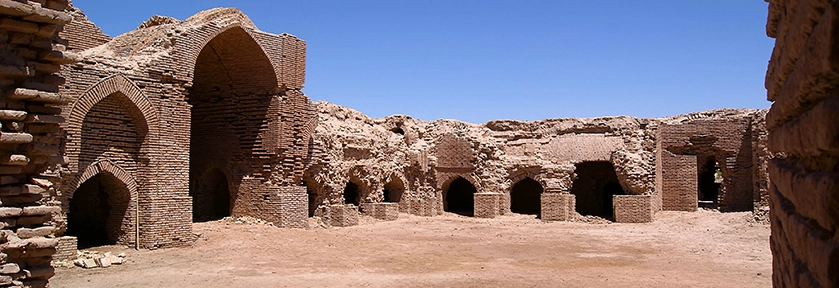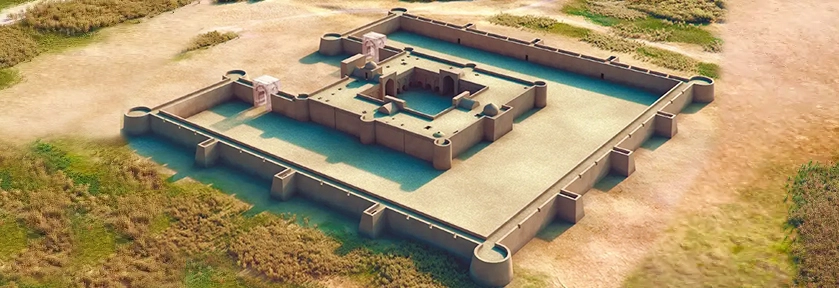Caravanserai Dayahatyn, also known as Bay Hatyn, located on the left bank of the Amu Darya River, 170 kilometers northwest of the city of Turkmenabat, stands out as the finest and best-preserved example of caravanserai architecture in Central Asia from the 11th to 12th centuries. The exact age of Dayahatyn is unknown, but it is believed to have been built between the 10th and 12th centuries on the site of an old Arab fortress.
Dayahatyn on the Silk Road
Dayahatyn is an exceptional example of caravanserai architecture in Turkmenistan -, alongside Rabat-i Malik and Ribat-i Sharaf. Masters created these three caravanserais with exceptional artistic craftsmanship, and they were considered luxurious inns in the Middle Ages. Their exceptional construction quality sets them apart from countless caravanserais on the Silk Road. People established these crucial institutions every 25-35 kilometers, providing shelter for traders and travelers on their journeys between the East and Europe.
Despite the disappearance of many caravanserais, Dayahatyn remains well-preserved, allowing for its restoration using existing remnants. It was built in the traditional style of Khorasan caravanserais at the end of the 11th century. In major cities, caravanserais were usually built near central markets and did not require fortifications. However, in remote steppe areas like Ribats Tahiri, they were fortified with powerful towers.
Layout of Caravanserai Dayahatyn
The layout of Dayahatyn includes a central courtyard, guest rooms, warehouses, and animal shelters along its perimeter. The entrance was adorned with symmetrically arranged panels reflecting the monument's style. Prior to the Mongol conquest, common bricks were typically used on the walls, and decorative plaster was applied in some interiors. Epigraphic panels from the 11th to 12th centuries bore the names of the Prophet Muhammad's successors, confirming Dayahatyn's role as a stop for elite travelers. It is believed that some rooms with unusual layouts and original designs housed these noble guests. Additionally, there is a mosque with Mihrab niches indicating the direction to the Kaaba in Mecca.
Unfortunately, the names of the masters who created this caravanserai during the Seljuk era have not been preserved. The name "Dayahatyn" was first mentioned in the 19th century and was used synonymously with "Hatyn" to describe the brick structure with an inner courtyard. In the 15th and 16th centuries, restoration work was carried out, including the construction of high arched gates that differed in style from the complex masonry of the Seljuk period.
With the decline of the Silk Road, Dayahatyn lost its significance and was abandoned. At times, it was used by military units and passing travelers.
Archaeological Research of Caravanserai Dayahatyn
In the 1920s, professional archaeologist Alexander Marushchenko began researching Dayahatyn. In 1950, architectural historian Anna Maksimovna Pribitkova conducted a detailed study of the site, noting various architectural elements. Later, academician Galina Anatolyevna Pugachenkova considered it a high architectural style.
Today, Caravanserai Dayahatyn is a popular international tourist attraction, and efforts are being made to preserve its fragile parts. This monument has a rich legend and features in medieval works by Arab and Persian historians and geographers, providing valuable information about its historical context.



